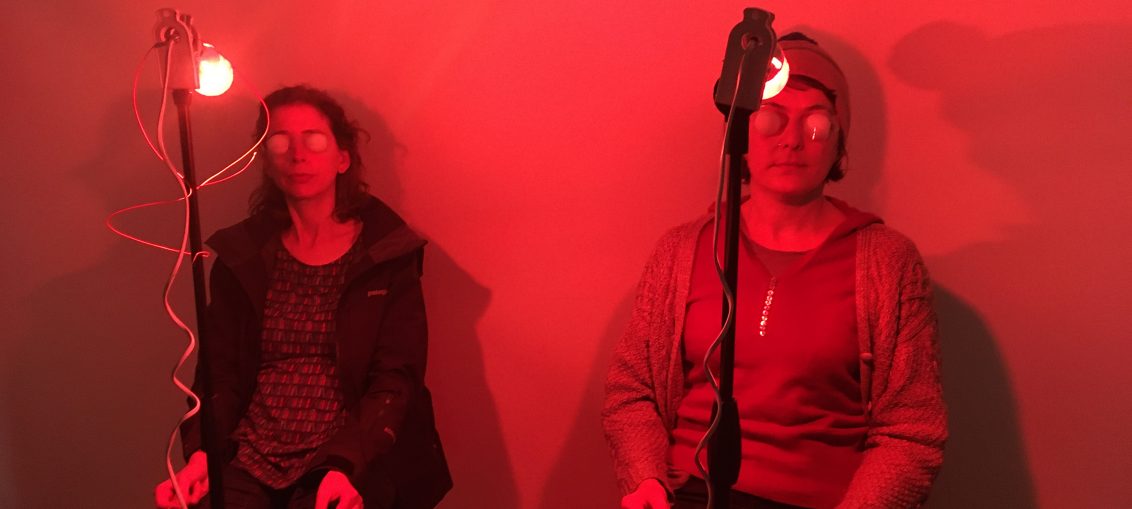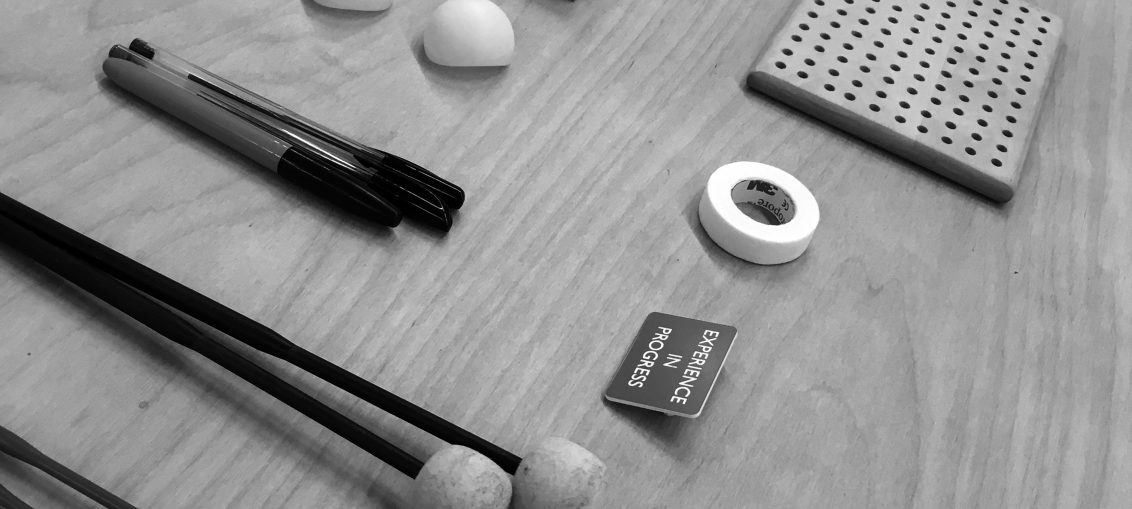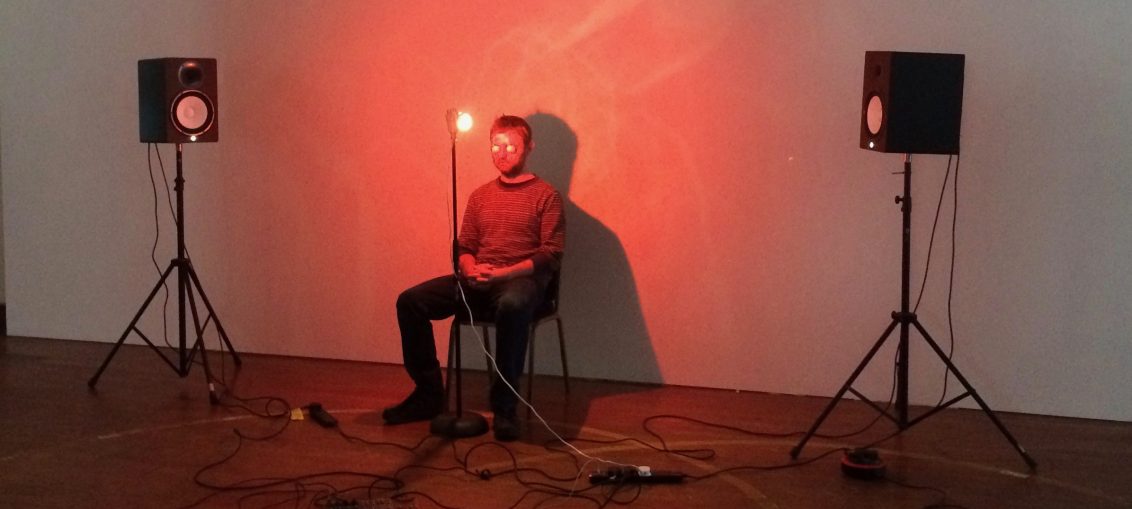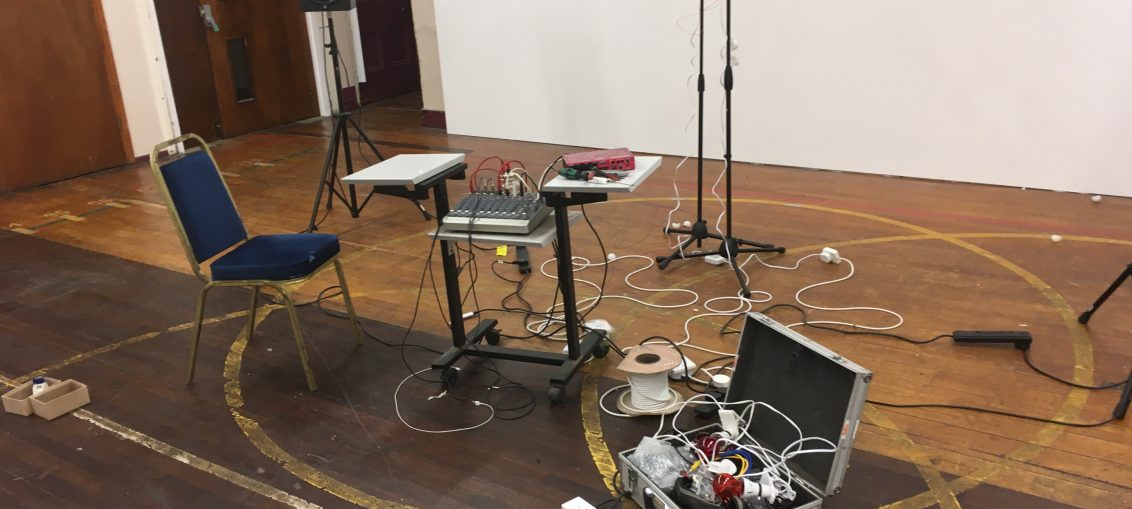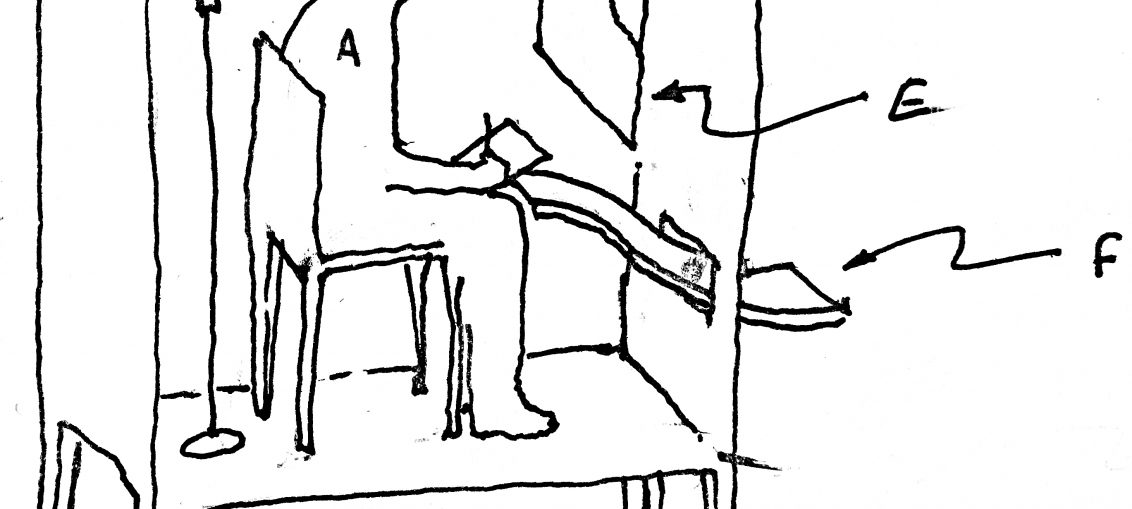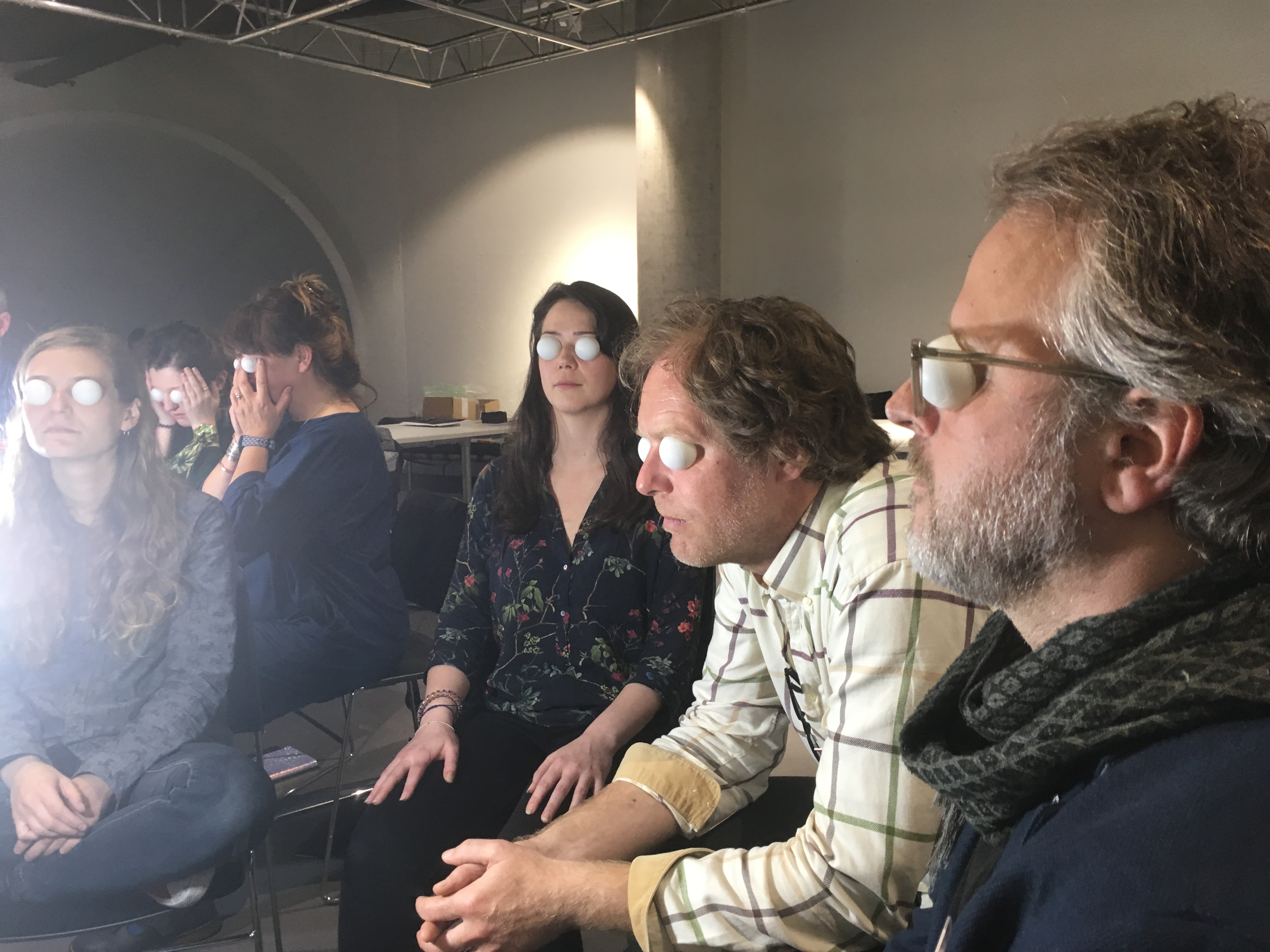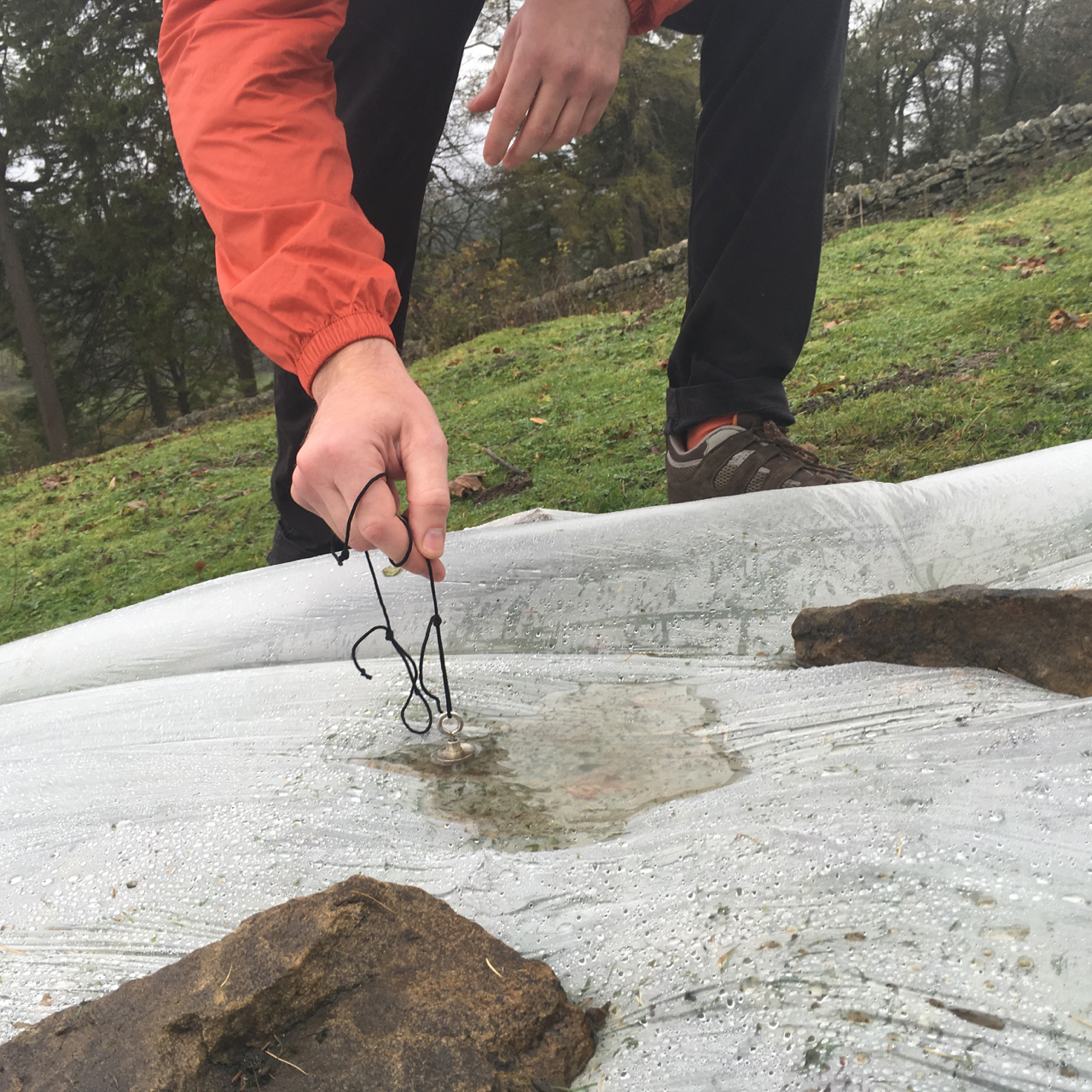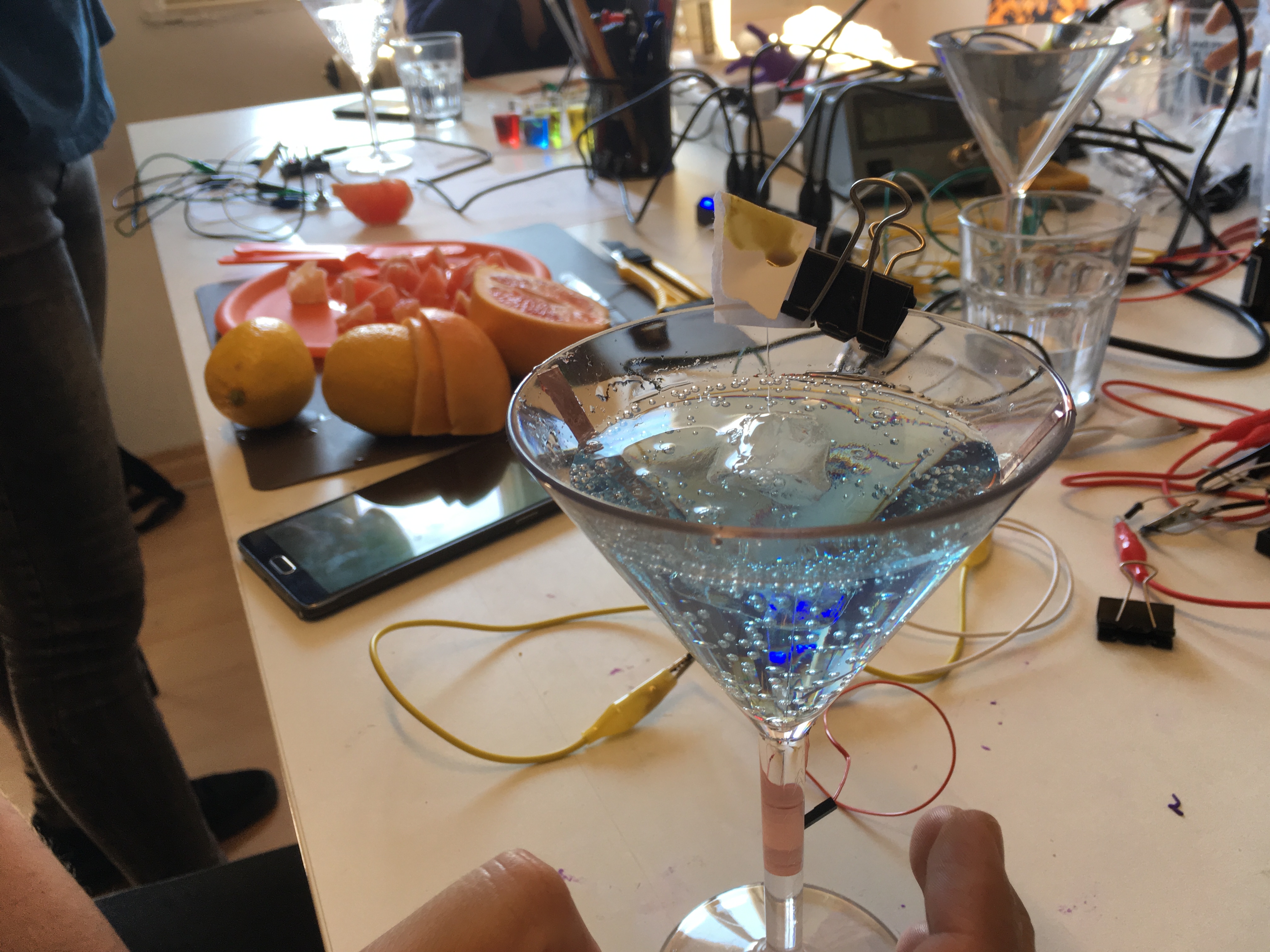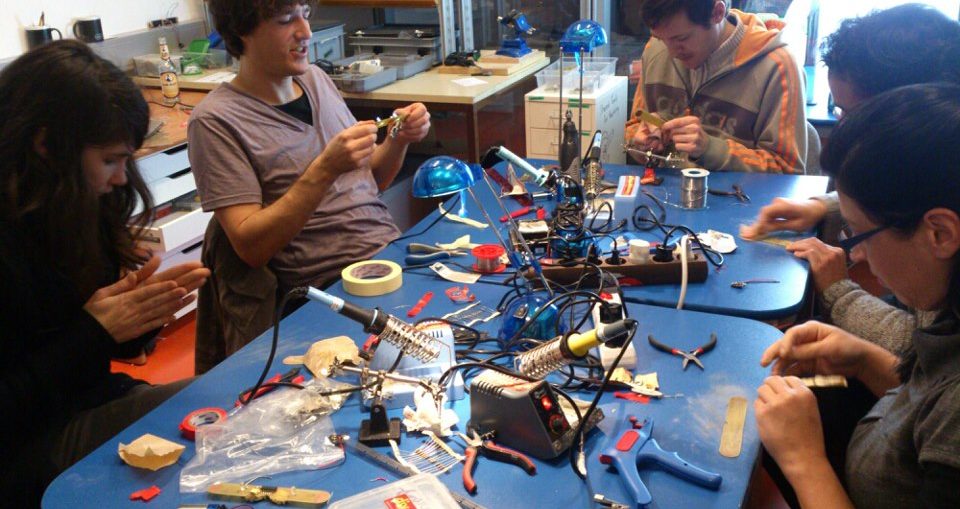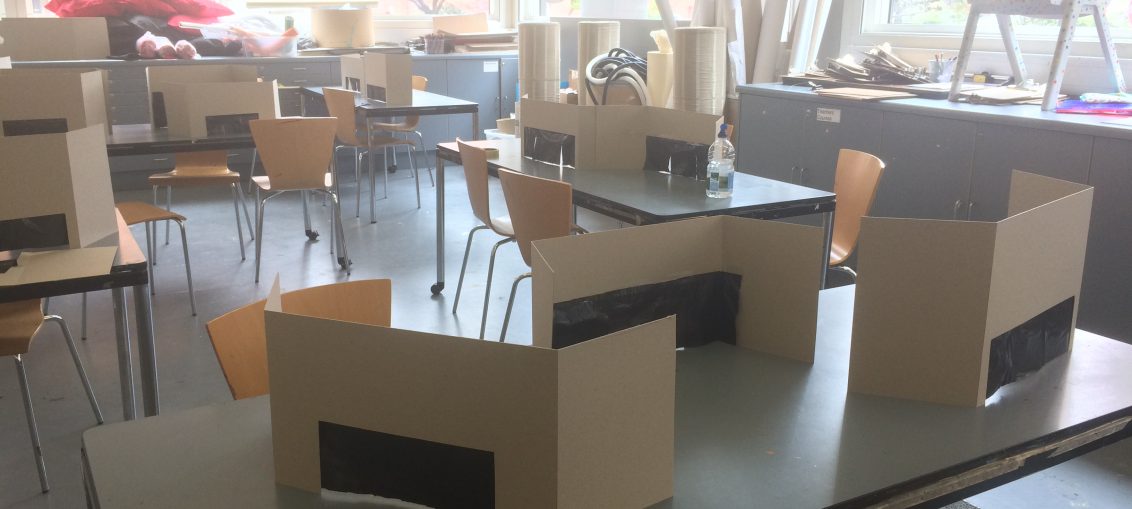https://www.youtube.com/watch?v=cs48nJo3ukU&feature=youtu.be Emergent strange face from recent workshop at Manchester Science Park A night vision camera captured video during the experiment from behind the mirror[see diagram here]. This used the program Isadora to detect movement using a ‘difference filter’ and building up an image using 'shimmer' and 'motion blur' filters with a long decay rate. An image builds up based on the collective movements of all 3 participants. A collective strange face. Emergent strange face from Proximity project Emergent strange face from Proximity project
Workshops
Documentation and notes from workshops. If you are interested in a workshop please contact me [ info[at]antonyhall.net ] to discuss options. See also: http://antonyhall.net/blog/workshops/
Proximity – @ Paradise works 11/12/2019
GANZFELD Translucent White Hemispherical Domes x 2 45mm diameter. Handmade signed edition of 20. Image: Anya Stewart Maggs Images from the Proximity show at Paradis works; I created these handmade cardboard box containing two ‘Ganzfeld Hemispheres’. These are translucent white domes perfectly shaped and crafted to fit in the eye socket, with elastic strap and small ceramic bead for adjustment. Inside are a set of instructions. A signed edition of 20 was produced as a workshop resource. The work is activated through its use, and the experiences that come through its use, and continued practice. Ideally, it should be stored alongside other items in the medicine cabinet. [See the current version of this workshop - Perception without object] I also showed a series of transcripts
Seven Practical experiments
Images from 'Seven Practical Experiments' workshop as part of Sum total of all the actions at Rogue artists studios. 1: Feldenkrais - See notes on the inwardly generated image (by deformation of the eyeball) 2. Anomalous perception scale Spontaneous sensations 3: Action intention paradox [See developmental notes] Alien hand 4: Concerning the inwardly generated image [See notes on Ganzfeld variation 1] 5: You are the object of your own observation [See notes on the mirror gaze experiment] 6: You are the object of your own observation. Mirror Gaze experiments in near darkness. 6: Perception without object [The perception of spatial relationships in respect to the orientation of one's body despite distracting information] See notes on Ganzfeld variation 2 7. The permanent possibility of experience. An based on the experiments of Ernst Mach [Notes to come]
On the inwardly generated image
A visual perception activity based on an Eyeball ATM [awareness through movement] an activity used in Feldenkrais [Teresa Brayshaw led the original session at the [Re]Action lab atLMJU] This session had the addition of generating phosphines in the eyeball through excitation and deformation of the eyeball.
Concerning the inwardly generated image
Sum Total Of All The Actions 7
Sum Total Of All The Actions 5
Sum Total Of All The Actions 4
Sum Total Of All The Actions 3
Sum Total Of All The Actions 2
Sum total of all the actions
Seven practical experiments
A manual for self-experimentation and a template for performance / A workshop on perceptual illusion and art. https://www.eventbrite.com/e/seven-practical-experiments-tickets-72221088219 'Seven practical experiments' is a new piece of work for by Antony Hall, developed through an exploration of perceptual illusion, and the methods used in experimental psychology. By taking part in this workshop, you will both 'experience' the work and 'perform' the experiments; in doing so you will become the work. The experiments will be preceded by a session of Feldenkrais led by Teresa Brayshaw. Feldenkrais is a method of enhancing self-awareness through movement and the heightening of bodily perception. Following this activity, you will then be guided through the 'seven practical experiments' and given space to reflect and discuss what you have experienced.
Proximity day 1 experiment 1
Mirror gaze experiment
The mirror gaze experiment requires the participant to sit in a near dark room and to stare at their own reflection for a set amount of time while listing to white noise. After only a short amount of time most people experience powerful illusions of facial distortion, grossly exaggerated features, faces of animals, the face of a lion or Darth Vader for example. These emerge as if from nowhere, disappearing at the slightest movement or eye blink, before manifesting new forms. These flowing cascades of illusory effects can elicit powerful emotional responses. In my own research, the mirror gaze experiment has resulted in significant illusory experiences across the full range of participants. I documented the way in which the illusory experience
Williams Clough ascent using Autoscope
Action Intention Paradox
In this experiment, which is now renamed the 'Alien Hands Experiment' one participant [A] places their hands under a flat-screen monitor. They then see what seems to be their own hands under the screen when in fact these are someone else's hands [B] who is mirroring their actions. The effect can be quite uncanny especially if the appearance of the hand contrast with their own [in scale, age or colour. Participants work together to lead or mirror the movements of what appears to be their own hands under a screen. After a short time, participants experience strange sensations which oscillate between a loss of agency over their own hands and feeling agency over someone else's hands. Action Intention Paradox uses a
Ganzfeld and Mirror Gaze
1-1 experiment sessions in the studio I invited participants to come to my studio to take part in phase 2 of my research. This opens up to using the Ganzfeld and the Strange Face in the Mirror Illusion. Both use white noise connected to a system of biofeedback, using Galvanic skin response signals to subtly modulate the noise. Through this, I have been developing my interview technique and also the working questions that I ask. This has resulted in a new artwork which is taking the form of a questionnaire. Currently, I'm referring to it as the "Hall Anomalous Perception scale" a tongue in cheek reference to the Cardiff scale designed to asses experiences of anomalous perceptions in daily life. A participant
Clay Hand Experiments
Workshops at Manchester City Art Gallery The aim was to deliver an engaging fun activity for all the family which related to the theme of the body and ideas around perception illusion referencing the Leonardo show as well as the Bridget Riley drawings in the Gallery. The workshop was open as a drop-in open to the general public and over the 8 days, we had around 800 people take part in total. The workshop served as an introduction to the idea of ‘perceptual and multisensory illusions’ and was based around my Clay Hand Experiment. I asked participants to work collaboratively to create their own hands and 'unfeasible objects 'with which to perform their own experiments on each other. It provided a
[Re]Mapping perception
Documentation from the [Re]Mapping perception workshop at LJMU 2 May 2019 Here is the original invitation... A workshop for artists/researchers engaging in a wide range of practice-based and artistic research methodologies. It aims to explore interdisciplinary methods through a series of provocations in embodied multisensory experience, designed to enhance our perception and self-awareness. The workshop provides an open space for participants from different fields to meet, communicate findings, share paradigms, and explore the value of sensory perception and awareness in our research. It also offers an opportunity to meet Madeline Schwartzman and gain insight into the works discussed in her new book See Yourself X: Human Futures Expanded. Her public lecture follows the workshop [ Places can be booked here https://www.eventbrite.com/o/antony-hall-19862154602 ] [Re]Action Lab is an
Synanet workshop: Disrupt Encode Consolidate
Notes for the collaborative Art & Bio-science Workshop at Lancaster University, UK on Monday 17th to Wednesday 19th December 2018I had a very interesting 3 days at Lancaster University participating in the Synanet workshop. The idea was to bring together interdisciplinary practice across the sciences and arts, to explore ideas in neuroscience research and BioArt. The workshop “aimed to DISRUPT dogmatic thinking across these disciplines, ENCODE new approaches and insights through shared interactions and CONSOLIDATE these ideas through artistic expression” https://cheapjack.github.io/DisruptEncodeConsolidate/ It consisted of scientific demonstrations and hands-on activity was to provide insight into the theory and practice of neuroscience research. FMRI [functional brain imaging] behavioural analysis in mice and Fruit Fly’s and Sand Fly’s, And some presentations about the “gut-micro-biome-brain interface”. Most interestingly “ …The workshop aimed to
Fieldwork under the ‘Darkest sky’
I was invited by Annie Carpenter and Nicola Ellis to Allenhead Arts for a few days of art and science during the night of the Orionids meteor shower, hoping for clear yet dark skies. They had been resident artists there over the last few months https://www.acart.org.uk/ . In a continuing effort to make my activities more sustainable and portable, I decided to cycle from Penrith to a remote location in the heart of the North Pennines which boasts the darkest skies in the UK. I was one of the most hellish bike rides I have ever endured. And I am no stranger to big hilly bike rides. One of my typical problems when taking part in this kind of open-ended participatory creative
Fieldwork / Night walk
I teamed up with artist Annie Carpenter to pull together a small group of artists and friends for a night of ‘fieldwork’. We organised an overnighter to do some experiments and have discussions together in the relaxed atmosphere of Middlewood Trust study centre; an off-grid permaculture farm. I had worked here before with [Annie and Sam Illingworth] doing some workshops with their students on a previous 'field research' style project. The concept captured my interest. We wanted to create a situation where we could work as well as have time and space to chat about ideas with others. My equipment consisted of my laptop, Arduino, [with a relay shield for experiments] and some electronics, GoPro, 360-degree camera. Also a heavy rechargeable
Electronic Taste Perception Workshop – Radiona
[Here is some documentation from one of the activities for the 're-mapping the senses workshop earlier this year...] Our sense of taste is directly affected by the colour and smell of the food. Experiments prove that the colour of a drink affects our perception of its sweetness for example. Altering the sound of the food, say adjusting the high-end frequencies while eating crisps can also affect our perception of the crunchiness of those crisps [see the paper here. Playing with these assumptions and expectations can create heightened food experiences. There have been a number of studies that suggest it is possible to simulate Sweetness, bitterness, sourness. Specifically, we test these settings as claimed by the Vocktail project [see below] to simulate the following sensations... Sour: magnitude of current: 180
Clay hand experiments at Radiona
Some documentation from the workshop at Radiona in Zagreb [See Re-mapping the senses workshop] [For more information about the clay hand experiment see here] [For more information about the clay hand experiment see here]
Fish-brain-machine / Radiona workshop
After constructing the Fish-brain-machine PCB circuits we spent some time experimenting and describing the hallucinogenic visuals created by the stroboscopic light. The ping pong balls over the eyes diffuse the LED light, making for a more intense effect - and enabling use with eyes open. Here they describe some of the effects including seeing colours and 'a strange experience' of seeing with only one eye - I get this exact same feeling when using it. It is also hard to know if your eyes are open or closed. [See also Re-mapping the senses workshop ] https://www.youtube.com/watch?v=Lwne5xICLkI
Radiona workshop, Zagreb
I'm doing a workshop related to my research, perceptual illusions and altering perception through experiments, Clay hand illusion and other activities based on sound and light and taste, at Radiona Zagreb, 21-22/04/2018 https://radiona.org/ check out the web Re-mapping the senses workshop page and resources here...
Workshopology
During my visit to Ljubljana in I was introduced to the ‘Workshopology’ concept and network. The idea is to bring together like-minded ‘Workshopologist’ to discuss methods and best practice in this area. More specifically the participants are dealing with similar subject matter. Open-source collaborative approaches to teaching and learning in DIY electronics, science and biotech. Taking part are Artist, engineers bio-hackers and scientist and various other creative ‘workshopologists’. We discussed the workshop as a tool for delivering and sharing knowledge outside of traditional educational frameworks, how types of workshop can be categorised and analysed. Outside of my own personal workshop practice, it was interesting to think about iLog workshop as a take on the electronics kit where limitations are provided as
Perceptual Portraits
The ‘Perceptual Portraits’ workshop took place alongside the ‘To be Human’ [1] exhibition at Manchester Art Gallery, and was open to the public over 4 weeks. After drawing portraits of each other, both with and with, without looking at the paper, participants sat face-to-face around tables and placed their hands through a curtain into a box. Inside they found a lump of clay with which they were instructed to sculpt a portrait of the person sitting opposite. The resultant sculptural portraits ranged from simple smooth finger pressed forms, to heads with grossly distorted facial features. Post-activity discussions took place on how the visual result related to the perceived imagined form that was created in their mind's eye. Typically, the features
Amplitude Modulation Workshop
I met Martin Howse in 2009 when he invited me to do a workshop for his micro research series in Berlin. At the time he had a fantastic apartment with a large garage space for a studio. The large table at its centre became sprawled with electronics by the end of the day. I had the opportunity to take a look at some of his projects, wonderful hand-drawn circuits burnt and encrusted that looked more like remnants from some other device of unknown function. For this workshop we investigated Amplitude Modulation, turning light into sound, use of the LM chips as an amplifier and using light sensors as an input, and making LEDs and lasers transmit sounds and signals through light




